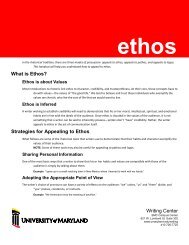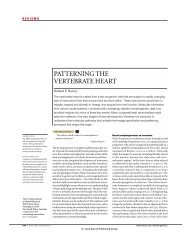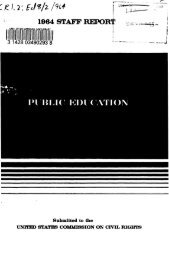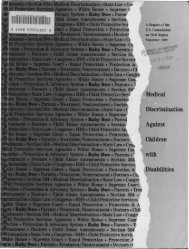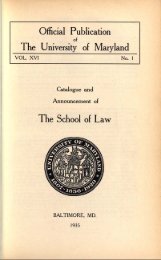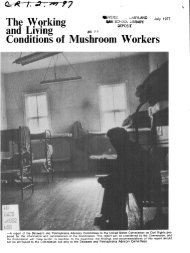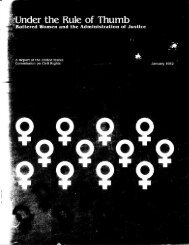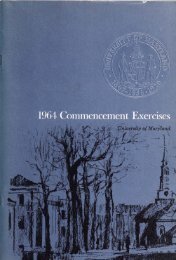1961 US Commission on Civil Rights Report Book 2 - University of ...
1961 US Commission on Civil Rights Report Book 2 - University of ...
1961 US Commission on Civil Rights Report Book 2 - University of ...
You also want an ePaper? Increase the reach of your titles
YUMPU automatically turns print PDFs into web optimized ePapers that Google loves.
that about <strong>on</strong>e-fifth <strong>of</strong> the New York City elementary and junior high<br />
schools enrolled 85 percent or more Negro and Puerto Rican pupils,<br />
while 48 percent <strong>of</strong> the elementary and 44 percent <strong>of</strong> the junior high<br />
schools enrolled 85 percent or more white pupils. Philadelphia reported<br />
that 14 percent <strong>of</strong> its schools had an enrollment <strong>of</strong> 99+ percent<br />
Negro. 10 In Pittsburgh in 1959, half <strong>of</strong> the Negro children in public<br />
schools attended schools which had 80 percent or more Negro enrollment.<br />
Sixty percent <strong>of</strong> all white children in public elementary schools<br />
and 35 percent <strong>of</strong> those in public sec<strong>on</strong>dary schools attended schools<br />
which had less than 5 percent Negro enrollment. 11<br />
At its California hearings, the <str<strong>on</strong>g>Commissi<strong>on</strong></str<strong>on</strong>g> heard <strong>of</strong> minority-group<br />
c<strong>on</strong>centrati<strong>on</strong> exceeding 85 percent in the public schools <strong>of</strong> Los Angeles,<br />
Pasadena, Compt<strong>on</strong>, M<strong>on</strong>rovia, Enterprize, and Willowbrook. 12 Similarly,<br />
"overwhelming Mexican-American student enrollment" was said<br />
to exist in 34 elementary schools in East Los Angeles. 18 In describing<br />
the San Francisco program <strong>of</strong> districting elementary schools so that<br />
children may attend schools within reas<strong>on</strong>able walking distance <strong>of</strong> their<br />
homes, the superintendent said: "Naturally, a number <strong>of</strong> schools are<br />
predominantly <strong>of</strong> <strong>on</strong>e race or another, reflecting the racial characteristics<br />
<strong>of</strong> that immediate neighborhood . . ." 14 An <strong>of</strong>ficial report <strong>on</strong> the<br />
Berkeley, Calif., system shows that two <strong>of</strong> its elementary schools have a<br />
Negro enrollment in excess <strong>of</strong> 90 percent. 15<br />
Testim<strong>on</strong>y at the <str<strong>on</strong>g>Commissi<strong>on</strong></str<strong>on</strong>g>'s Detroit hearings revealed that the 28<br />
elementary schools in that city's Center District have an almost entirely<br />
Negro enrollment. 10 Other n<strong>on</strong>southern cities with high racial c<strong>on</strong>centrati<strong>on</strong>s<br />
in public schools include Bost<strong>on</strong>, Chicago, Indianapolis, and<br />
Cleveland and Youngstown, Ohio. 17 There are, no doubt, many others.<br />
Segregati<strong>on</strong> in the public schools <strong>of</strong> the urban North and West results<br />
to a large extent from the familiar system <strong>of</strong> neighborhood schools in<br />
combinati<strong>on</strong> with residential c<strong>on</strong>centrati<strong>on</strong>s <strong>of</strong> minority groups. These<br />
"ghettos" were not explicity created by law. They arose largely because<br />
<strong>of</strong> the inability <strong>of</strong> minority-group members to find housing elsewhere. 18<br />
That is why the resulting segregati<strong>on</strong> in schools is generally called de<br />
facto, to distinguish it from de jure, segregati<strong>on</strong>. 19<br />
Of course <strong>on</strong>ly the latter is unc<strong>on</strong>stituti<strong>on</strong>al. For, as already indicated,<br />
20 the 14th amendment prohibits <strong>on</strong>ly such racial segregati<strong>on</strong> as is<br />
imposed by governmental acti<strong>on</strong> (or inacti<strong>on</strong> in the face <strong>of</strong> a legal duty<br />
to act). Thus, the de facto segregati<strong>on</strong> that results from free private<br />
choice, or from residential patterns based <strong>on</strong> purely private discriminati<strong>on</strong><br />
is apparently not forbidden.<br />
School authorities, usually the board <strong>of</strong> educati<strong>on</strong> or the superintendent<br />
<strong>of</strong> schools, designate the particular public school each child<br />
shall attend. This power is generally exercised by establishing attendance<br />
z<strong>on</strong>es. Transfers to schools, other than those so assigned, are<br />
<strong>of</strong>ficially c<strong>on</strong>trolled. The sites <strong>of</strong> new schools ordinarily are selected<br />
100



